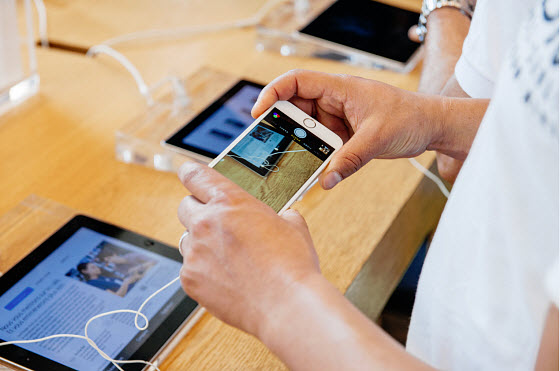The technology involved appears to be wearables that will connect to and interact with the iPhone.
Apple Inc. has now been awarded a patent for a type of augmented reality glasses that would function based on a wireless connection with the iPhone and would possibly offer the wearer a three dimensional AR functionality not entirely unlike that of the halted Google Glass product.
The original filing for this AR technology device patent occurred back in September 2008.
The patent involves a mountable device that could be created in the form of wearable technology such as goggles or hats or that could be attached to hats or helmets. The patent doesn’t specifically discuss virtual or augmented reality, but it does show a device that has the potential of offering a split screen capability in order to display several different image frames in order to provide three dimension-like image depth through stereoscopic imaging.
The patent also shows possible augmented reality glasses that could adjust media display beyond the glasses lenses.
 This would display the images at a distance of about 4 meters (about 13 feet), instead of 20 millimeters (about ¾ inch). That is the concept behind AR technology and it has, therefore, been assumed in many reports that this tech will be the focus of those wearables.
This would display the images at a distance of about 4 meters (about 13 feet), instead of 20 millimeters (about ¾ inch). That is the concept behind AR technology and it has, therefore, been assumed in many reports that this tech will be the focus of those wearables.
That said, Apple could choose to create integration of further advanced VR or AR functions into a device if it chose to do so, and could opt not to progress with the development. That said, as is always the case with Apple, it declined the opportunity to comment on any of its products that are still in development and that have not yet been officially unveiled.
This technology comes at a time in which Google has recently announced that its own two year old Explorer Program for its Google Glass augmented reality glasses has been shut down. Moreover, that company has hired a former exec from Apple, Tony Fadell, at the head of the company’s redevelopment efforts. It has stated that it will continue to sell the device to enterprise customers, but it is very clear that the company has taken a step backward from the route that it had been taking with that wearable technology.

